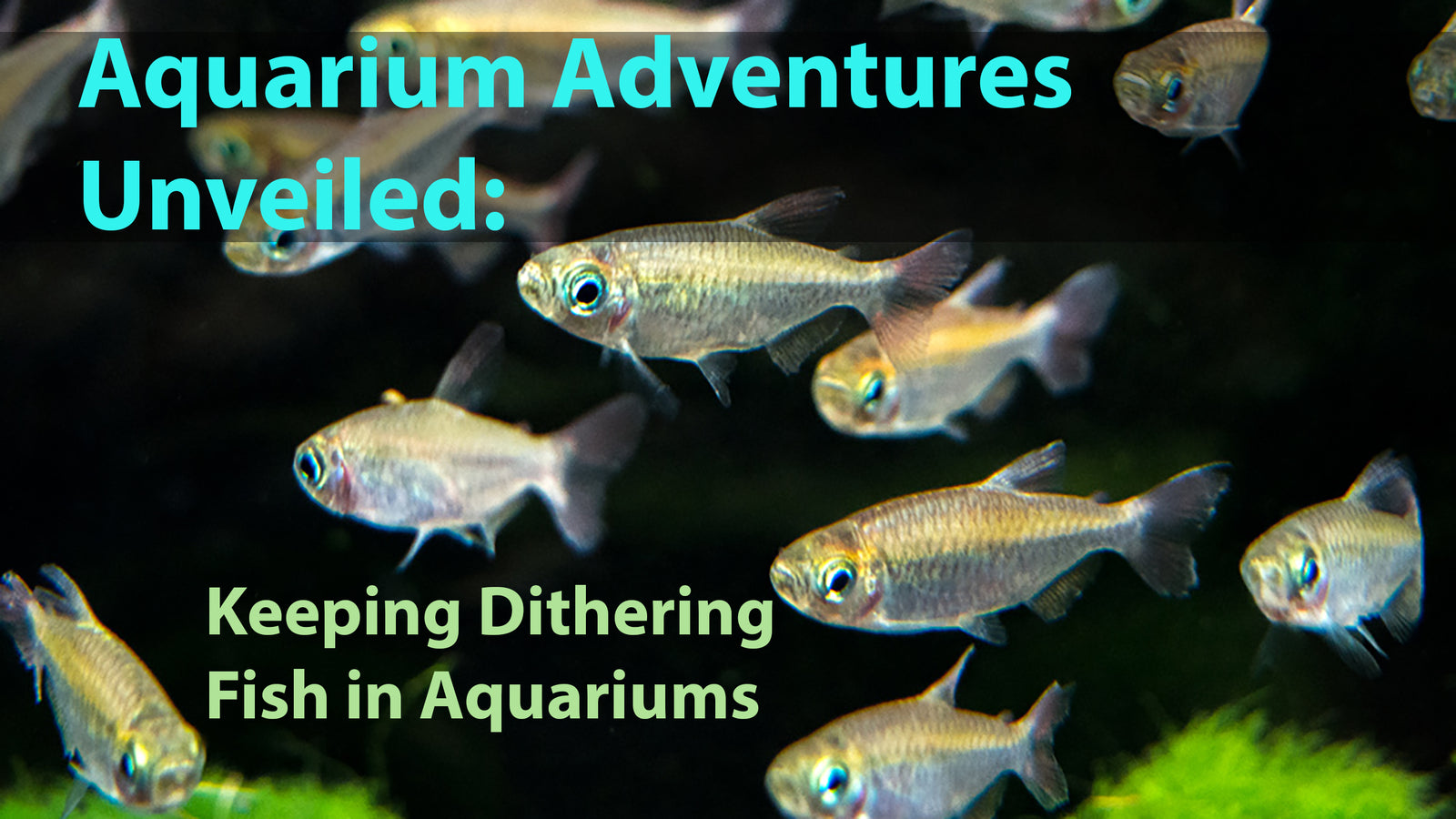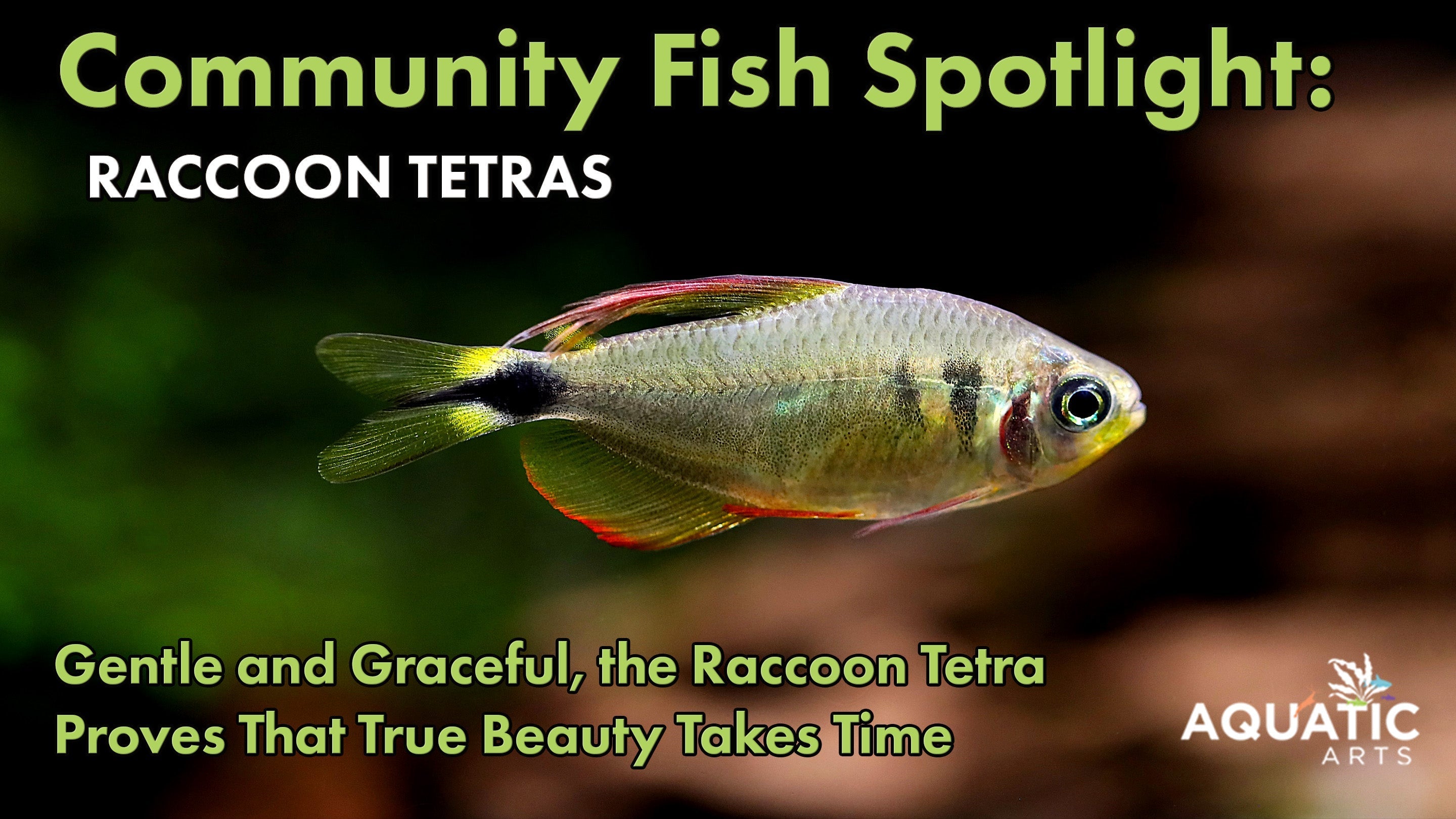Aquarium Adventures Unveiled: Keeping Dithering Fish in Aquariums

Creating Harmony: The Role of Dithering Fish in Aquarium Ecosystems
Aquarium enthusiasts often strive to create a harmonious underwater environment, carefully selecting fish species that coexist peacefully. One such strategy is introducing dithering fish, whose calming presence can reduce aggression and territorial behavior among tank mates. In this article, we'll delve into the world of dithering fish, exploring their benefits and the best practices for keeping them in your aquarium.

Communication Through Movement: Dithering fish communicate with one another and other tank mates through their movements and body language. Certain behaviors, such as synchronized swimming or flashing bright colors, can convey messages related to mating, feeding, or warning of impending danger.
Understanding Dithering Fish:
Dithering fish are a category of aquatic species valued for their calm and peaceful nature within the aquarium environment. They exhibit a placid demeanor, characterized by their gentle movements and lack of aggressive behavior towards tank mates. Unlike territorial or dominant species, dithering fish prefer to roam freely throughout the aquarium, often in loose groups or schools.
One of the primary functions of dithering fish is to serve as distractions for more aggressive or territorial species. In the dynamic social hierarchy of the aquarium, conflicts can arise between certain fish due to competition for space, food, or dominance. Dithering fish play a crucial role in diffusing these tensions by diverting the attention of aggressive individuals, thereby reducing the likelihood of confrontations and maintaining a harmonious atmosphere.
By continuously moving around the aquarium, dithering fish draw focus away from potential sources of conflict. Their presence creates a sense of activity and movement within the tank, which can help alleviate stress and anxiety among all inhabitants. This diversionary tactic not only benefits the dithering fish themselves but also contributes to the overall well-being of the entire aquatic community.
In essence, dithering fish act as mediators within the aquarium ecosystem, promoting peace and tranquility among tank mates. Their non-confrontational behavior and social interactions serve to create a more relaxed and enjoyable environment for both fish and aquarium enthusiasts alike. Whether swimming gracefully through the water column or exploring the various nooks and crannies of the tank, dithering fish embody the essence of serenity in the underwater world.
Popular Dithering Fish Species:

Tetras: Tetras, such as Neon Tetras and Cardinal Tetras, are vibrant, schooling fish that add color and movement to the tank. Their small size and peaceful nature make them ideal dithering fish for a wide range of aquarium setups.

Rasboras: Rasboras, like Harlequin Rasboras and Chili Rasboras, are another group of schooling fish known for their calm disposition. They thrive in planted tanks and provide a beautiful backdrop as they swim gracefully through the water.

Danios: Zebra Danios, Glow light Danios, and Pearl Danios are active, fast-moving fish that can captivate the attention of more aggressive species. Their constant motion and shoaling behavior make them excellent dithering fish for larger aquariums.

Livebearers: Fish such as Guppies and Swordtails not only add color to the aquarium but also serve as effective dithering fish. Their lively antics and prolific breeding habits ensure a dynamic and engaging aquatic environment.
Benefits of Dithering Fish:
Reduced Aggression:
Dithering fish play a crucial role in promoting peace and harmony within the aquarium environment. By their very nature, these calm and non-confrontational species help diffuse tension among tank mates, thereby reducing instances of aggression and territorial disputes. In a community tank setting where different species may have conflicting behaviors or hierarchical structures, dithering fish act as mediators, redirecting the attention of potentially aggressive individuals and fostering a more tranquil atmosphere for all inhabitants to thrive.
Natural Behavior:
Dithering fish exhibit innate shoaling behavior, forming loose groups or schools as they navigate the aquarium. This natural inclination to socialize and remain in close proximity to one another provides companionship and stimulation for both the dithering fish themselves and other species in the tank. In mimicking their wild behavior, dithering fish contribute to the overall well-being of the aquarium ecosystem, promoting a sense of normalcy and natural interaction among its inhabitants. Additionally, observing dithering fish engage in their natural behaviors can be a source of fascination and education for aquarium enthusiasts, offering insights into the intricate dynamics of aquatic life.

Social Hierarchy: Dithering fish often exhibit complex social structures within their schools, with individuals like Black Emperor Tetras, establishing hierarchies based on factors such as size, age, and gender. These social dynamics can influence behavior within the aquarium community and contribute to the overall balance and cohesion of the tank.
Visual Appeal:
The constant movement and activity of dithering fish add visual interest and dynamism to the aquarium landscape. Whether gracefully gliding through the water column or darting among the plants and decorations, these active and agile species captivate the attention of onlookers and create a vibrant underwater spectacle. The presence of dithering fish contributes to the aesthetic appeal of the aquarium, enhancing its beauty and creating a dynamic focal point for observers. Furthermore, their lively presence helps create a sense of life and energy within the tank, transforming it into a captivating and immersive underwater world for enthusiasts to enjoy and appreciate.
Best Practices for Keeping Dithering Fish:
Schooling: Dithering fish thrive in groups, so it's essential to keep them in schools of six or more individuals to prevent stress and encourage natural behavior.
Compatible Tank Mates: When selecting dithering fish, ensure compatibility with other species in the aquarium in terms of water parameters, temperament, and size.
Aquarium Size: Consider the size of your tank when choosing dithering fish. Larger aquariums provide more space for schooling behavior and allow for a greater variety of species.
Environmental Enrichment: Provide ample hiding places, plants, and open swimming areas to accommodate the diverse needs of dithering fish and promote their well-being.

Ecological Importance: Dithering fish play vital roles in their native ecosystems beyond their function as aquarium inhabitants. They serve as prey for larger predatory species, contribute to nutrient cycling and ecosystem dynamics, and may even act as indicators of environmental health and water quality. By maintaining healthy populations of dithering fish in captivity, aquarists indirectly support conservation efforts and contribute to the preservation of aquatic biodiversity.
In the intricate ecosystem of the aquarium, every fish plays a vital role in maintaining balance and harmony. Dithering fish, with their gentle demeanor and social behavior, contribute significantly to the overall health and stability of the aquatic environment. By understanding their importance and implementing best practices for their care, aquarists can unlock the full potential of their aquarium and enjoy a captivating underwater adventure like no other.
Q&A Section:
Q: What are dither fish for cichlids?
A: Dither fish for cichlids are typically small, fast-moving species that can withstand the aggressive behavior of many cichlid species. Popular choices include certain types of tetras, such as Congo Tetras or Buenos Aires Tetras, as well as certain barbs like Tiger Barbs or Rosy Barbs. These dither fish help reduce stress and aggression among cichlids by drawing their attention away from potential conflicts.
Q:What are the best dither fish for Betta Fish?
A: Betta fish are known for their territorial nature, so suitable dither fish should be peaceful and non-aggressive. Good options include small schooling fish like Neon Tetras, Ember Tetras, or White Cloud Mountain Minnows. These dither fish add movement and companionship to the aquarium without provoking aggression from the Betta.
Q: What are the best dither fish for Crayfish?
A: Crayfish are opportunistic feeders and may view small fish as potential prey. Therefore, suitable dither fish for crayfish should be fast-moving and able to evade capture. Species like Zebra Danios, Cherry Barbs, or Rosy Red Minnows are often recommended as they can outswim crayfish and are less likely to be targeted as food.
Q: What are the worst dither fish to keep?
A: The worst dither fish to keep are those that are overly aggressive, territorial, or have predatory tendencies. Examples include larger cichlids, aggressive barbs like Tiger Barbs or Tinfoil Barbs, and predatory fish like larger species of catfish or aggressive pufferfish. These fish can instigate conflicts, stress out tank mates, or pose a threat to other inhabitants.
Q: What are the best dither fish to have in a pond?
A: Dither fish for ponds should be hardy, able to tolerate fluctuating water conditions and potential predators. Common choices include species like Goldfish, Koi, or Rosy Red Minnows. These fish add movement and interest to the pond environment while also helping to control algae and insect populations. Additionally, they can serve as prey for larger pond inhabitants, contributing to the natural balance of the ecosystem.
Q: Do snails benefit from having dither fish in a freshwater aquarium?
A: Yes, snails can benefit from having dither fish in a freshwater aquarium. Dither fish help create a more dynamic and active environment within the tank, which can stimulate natural behaviors in snails. The presence of dither fish can also provide visual interest and enrichment for snails, encouraging them to explore their surroundings and engage in activities such as grazing on algae or scavenging for food particles.
Additionally, dither fish can indirectly benefit snails by reducing stress and aggression among other tank inhabitants. By diverting the attention of potentially aggressive species, dither fish help maintain a more peaceful atmosphere in the aquarium, which can contribute to the overall well-being of all aquatic inhabitants, including snails.
Overall, while dither fish may not directly interact with snails in the same way they would with other fish species, their presence can still have positive effects on the aquarium environment and contribute to the health and happiness of snails.
If you loved learning about Dithering Fish, check out our other Aquarium Adventures Unveiled below.






